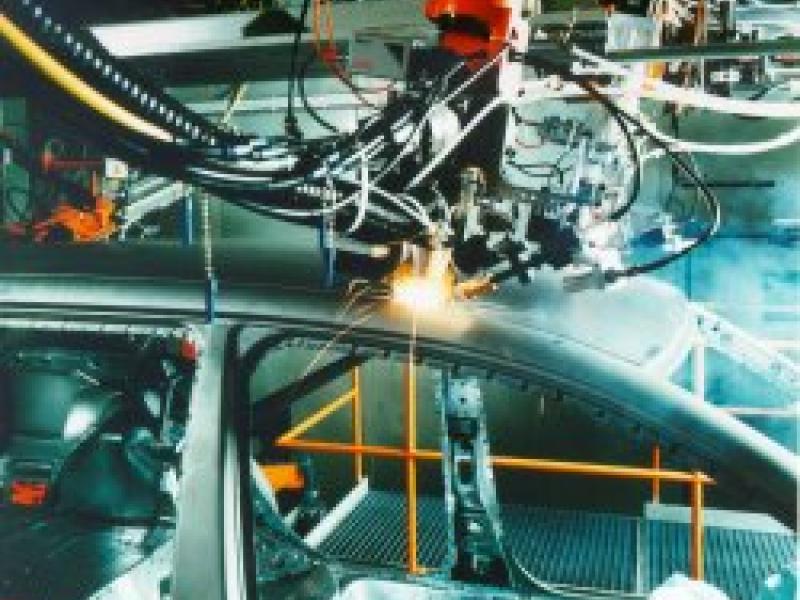Laser welding has grown up to a key technology in modern car body manufacturing during the last 10 years. In one welding phase, a number of welding robots (usually 2-6) simultaneously process weld seams on a car body. The welding robots are fed by external laser sources, which are very expensive devices. Current technology allows to switch the output of the laser source in about 100 ms from one robot to another. About six robots can, in principle, be fed by one laser source. The scheduling algorithms for the welding robots usually aim at maximizing the work done in a production cycle which generally translates into minimizing idle travel time.
The goal of this project is to also look into making best use of the most expensive resource, the laser sources. We investigate whether or not it is possible to save laser sources by sharing them among the robots. To this end, we want to optimize the assignment of laser sources and the dispatching of robots in such a way that the number of required sources is minimized without increasing the processing time in the laser welding facility.
